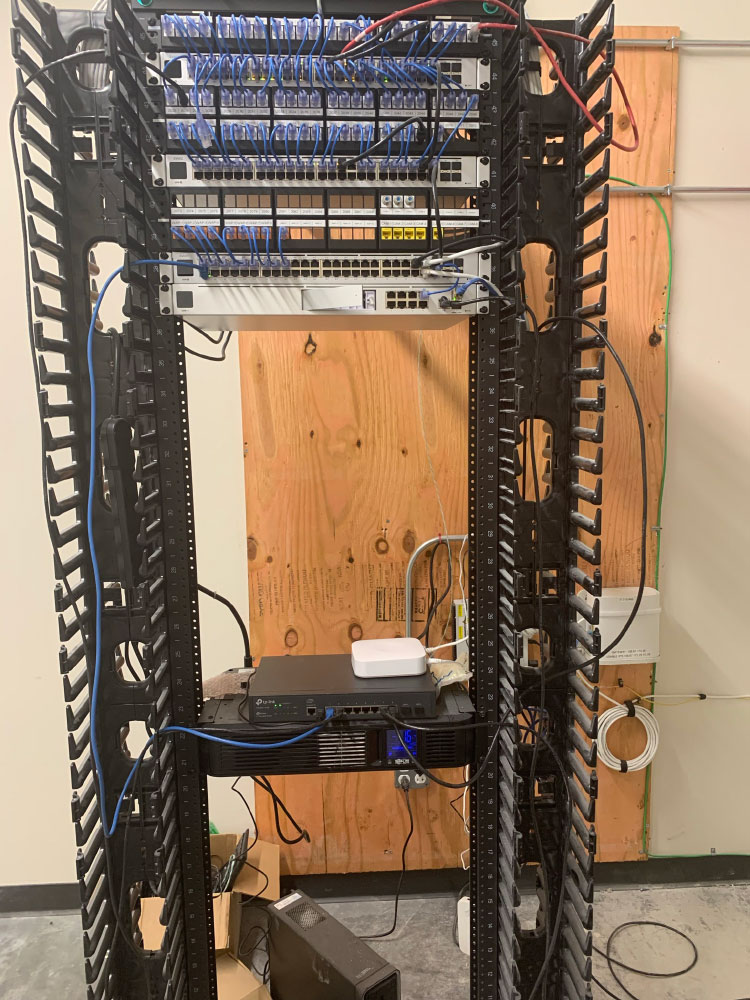
How Much Bandwidth Does Your Business Need?
By Dave Warner, Systems Engineer at Cenetric
You and your team can’t be productive in your business if downloads take forever, video conferences are always stalling, and crucial apps load at a pace that make you wonder if you’ve entered some sort of time warp.
These delays are frustrating at best and costly at worst, and they can usually be blamed, at least in part, on the wrong internet bandwidth. If you don’t right-size the connectivity for your business, you’ll cost yourself when it comes to your budget and productivity — and even employee engagement.
Why would employee engagement suffer? Because devoting unnecessary effort to using technology to complete work causes something called “digital friction.” This disruption makes it hard for your team to stay focused and energized in their day-to-day activities.
Almost half (47%) of employees in one survey said that “applications that repeatedly freeze, crash or load slowly” created digital friction in their work. And 29% of survey respondents said a bad tech experience made them want to leave their jobs.
To keep your team’s frustrations with technology down, you have to give them the right tools — and optimal network bandwidth is one of them.
Bandwidth vs. throughput
Before we go too far, let’s be clear on the difference between bandwidth and throughput. Your bandwidth is the capacity of your connection to transmit data, while the throughput is the speed at which data is transmitted.
When your bandwidth is higher, you have a greater chance of getting the speed you want. Think of bandwidth as the number of checkout lanes open at the grocery store: the more lanes that are open, the less chance you have of waiting long.
Of course, that’s not always the case — sometimes how long you wait depends on factors other than just the number of lanes available. The same goes for your network connection, but we’ll get to that in a bit.

Internet provider options for small businesses
When it comes to getting connected, most small businesses have a few choices, but they’re highly dependent on location.
Fixed satellite
These promise high bandwidth, but the signal has to travel so far (about 22,000 miles) to hit the satellites that the connection feels slow no matter how much bandwidth you have. But for some very rural businesses, this might be the only option.
Low-grade DSL
This offering typically has very low bandwidth caps and is limited by the quality of the lines. It’s an improvement over fixed satellite service, but usually not much. It’s also used in rural areas, running on traditional phone lines.
Residential broadband
This is typically offered through cable lines and higher-end DSL. It can usually hit speeds of 100-200 mbps for downloads and 15-30 mbps for uploads, which can be a good option for small businesses. It’s more common as you move closer to cities.
Residential and business fiber
Google Fiber and AT&T U-verse are examples of this service, usually offering speeds of 1 Gbps or more for a very affordable price — typically $100-$200 per month. You’ll see it offered in bigger cities, and most small businesses are comfortable at this level.
Enterprise fiber
This offering costs considerably more than residential fiber ($800-$1,000 per month) for the same or lower speeds, but it usually carries a higher service guarantee and is more reliable.

What slows connections down
If you’ve ever signed up for a higher-bandwidth service thinking you’ll automatically get better speeds, you’re probably familiar with the frustration that comes if you don’t notice a significant change once it’s installed.
That’s because bandwidth isn’t the only factor in your network speed — how you’ve built your network and its ongoing management can make a big difference.
To achieve the throughput you want for your team to do their best work, you need both appropriate bandwidth and solid network management. You’ll want to consider:
- How many users you have
- Applications they use and the data each one consumes
- How heavily these applications are used each day (and even when they’re used)
All these factors contribute to whether you’ll see network overload and, in turn, slower performance.
Different businesses will have vastly different needs for their networks. An office where the staff is using the network in everyday ways like accessing the internet and working in cloud applications might be just fine at a bandwidth between 200 mbps and 1 gbps. But other types of businesses will need far more.
Restaurants and other hospitality businesses are notorious for throughput issues, mostly because of guest Wi-Fi usage. Reliable, fast Wi-Fi is one of the top factors guests value in the restaurant they choose.
Dining etiquette aside, restaurant-goers often use bandwidth-gobbling apps like Netflix while they wait or eat. An HD stream will use 5 mbps of bandwidth, which doesn’t sound like much at first, but five to 10 people streaming at once will eat up your bandwidth pretty quickly.
It’s important to find a solution that provides enough bandwidth for your needs while staying within a reasonable budget. It’s just as important to manage your network properly to get the best throughput and make the most of what you’ve spent on bandwidth.

Get help managing your network and your productivity
According to TechTarget, some of the biggest culprits in slow connections include:
- Outdated routers, switches and Ethernet cabling
- Improper cabling strategies
- Software bugs
- Malware
- Oversized applications, which consume more storage, backup and network resources
- Improper allocation of bandwidth for applications
- Weak network design
- Poor virtual LAN (VLAN) management
Most business owners aren’t networking experts, so turning to an IT pro to properly set up, manage and maintain your network can be the determining factor in your productivity. If you’re managing it on your own, it’s easy for a network to get out of control, especially if you’re growing rapidly.
If you don’t have an IT staff, a managed service provider can help you address these issues. If you do but they’re staying focused on other work, co-managed services can lower the burden on your team while still making sure your network is protected and up-to-date.

Let Cenetric help you make the most of your network
Whichever type of service you choose, it’s imperative to manage your network the right way. Keeping it in top form means you’ll avoid overpaying for bandwidth you don’t actually need, give your team the fast connectivity they need to do their best work, and protect it from intrusion by cybercriminals.
Cenetric delivers responsive, expert IT services for network management and any other tech issue you can throw at us. Whether you’re in Kansas City or beyond, Cenetric has the experience to help. Tell us about your challenges, and we’ll be in touch right away.
